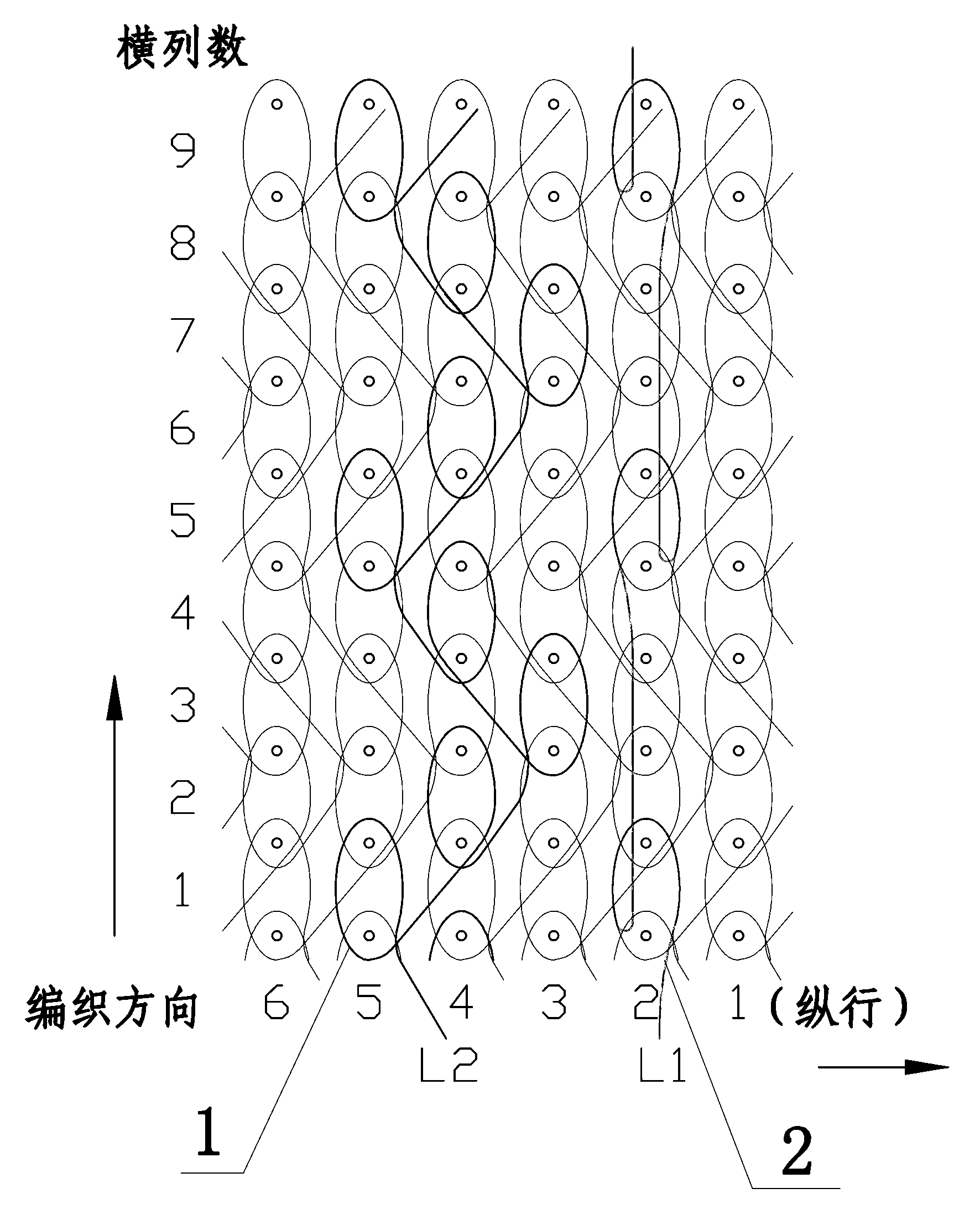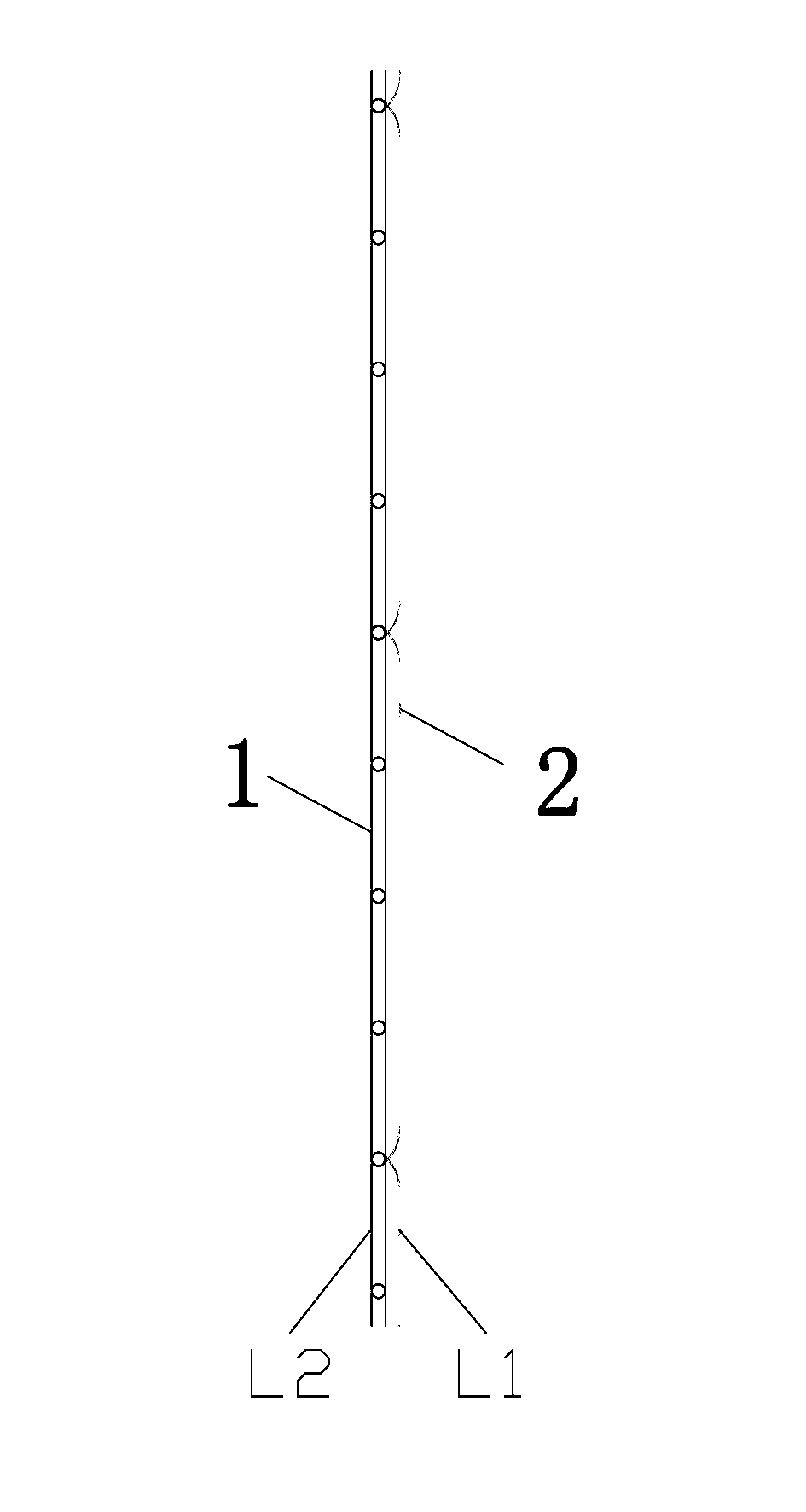Anti-adhesion hernia repair patch and weaving method thereof
An anti-adhesion and hernia repair technology, applied in the field of biomedicine, can solve problems such as granulation hyperplasia, increased wounds, infection, etc., and achieve the effects of stable combination, reasonable design and simple structure
- Summary
- Abstract
- Description
- Claims
- Application Information
AI Technical Summary
Problems solved by technology
Method used
Image
Examples
Embodiment Construction
[0017] Refer to attached figure 1 , 2 An anti-adhesion hernia repair patch has a mesh base cloth 1 woven with polyvinylidene fluoride or polytetrafluoroethylene monofilament, and polypropylene monofilament and polyvinylidene fluoride or polytetrafluoroethylene are used on the reverse side of the mesh base cloth 1. Tetrafluoroethylene monofilaments are laid together to form a circle, and are connected with the mesh base cloth to form a polypropylene braided layer 2, forming a double-layer braided structure of different materials.
[0018] The anti-adhesion hernia repair patch is a mesh braid.
[0019] The anti-adhesion hernia repair patch can be planted into square, rectangular, round, oval or irregular shapes.
[0020] An anti-adhesion hernia repair patch weaving method, the method is as follows:
[0021] On the standard warp knitting machine, two bars are used for knitting, in which the rear comb L2 is fully covered with polyvinylidene fluoride (PVDF) or polytetrafluoroeth...
PUM
 Login to view more
Login to view more Abstract
Description
Claims
Application Information
 Login to view more
Login to view more - R&D Engineer
- R&D Manager
- IP Professional
- Industry Leading Data Capabilities
- Powerful AI technology
- Patent DNA Extraction
Browse by: Latest US Patents, China's latest patents, Technical Efficacy Thesaurus, Application Domain, Technology Topic.
© 2024 PatSnap. All rights reserved.Legal|Privacy policy|Modern Slavery Act Transparency Statement|Sitemap


